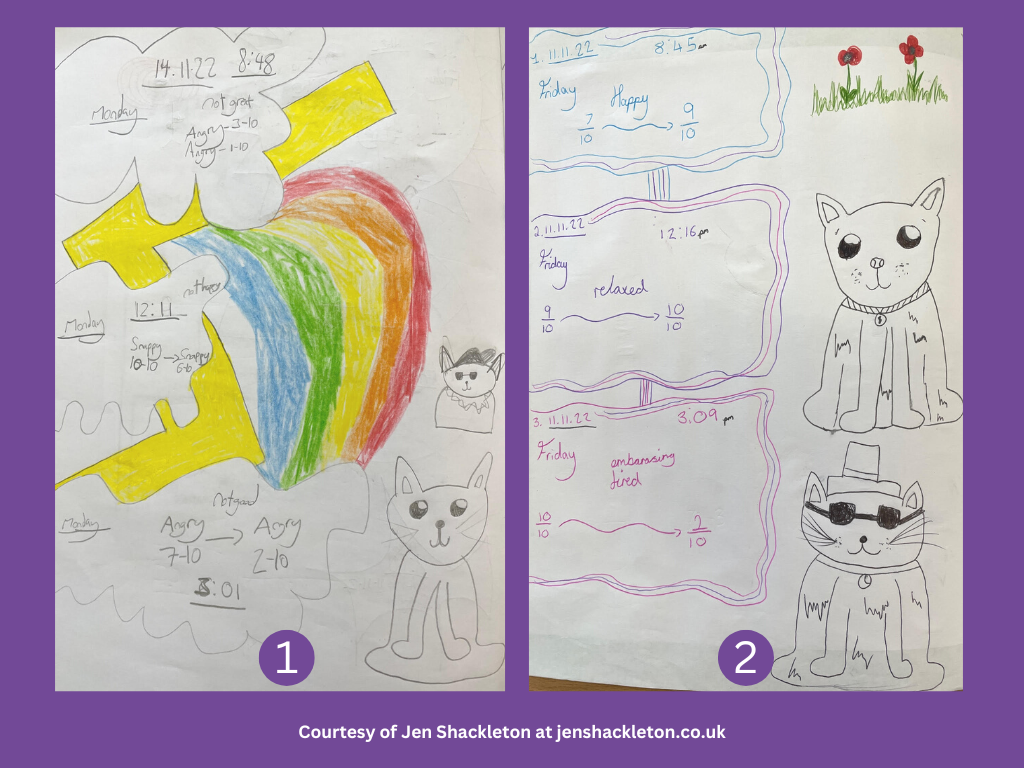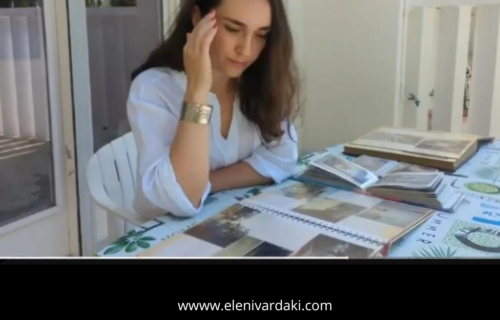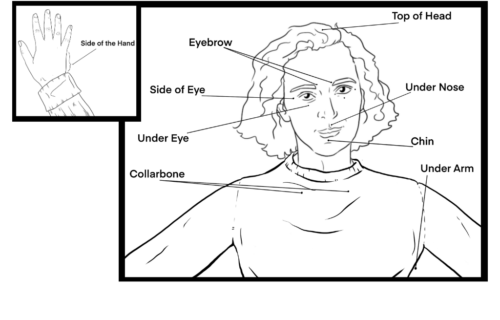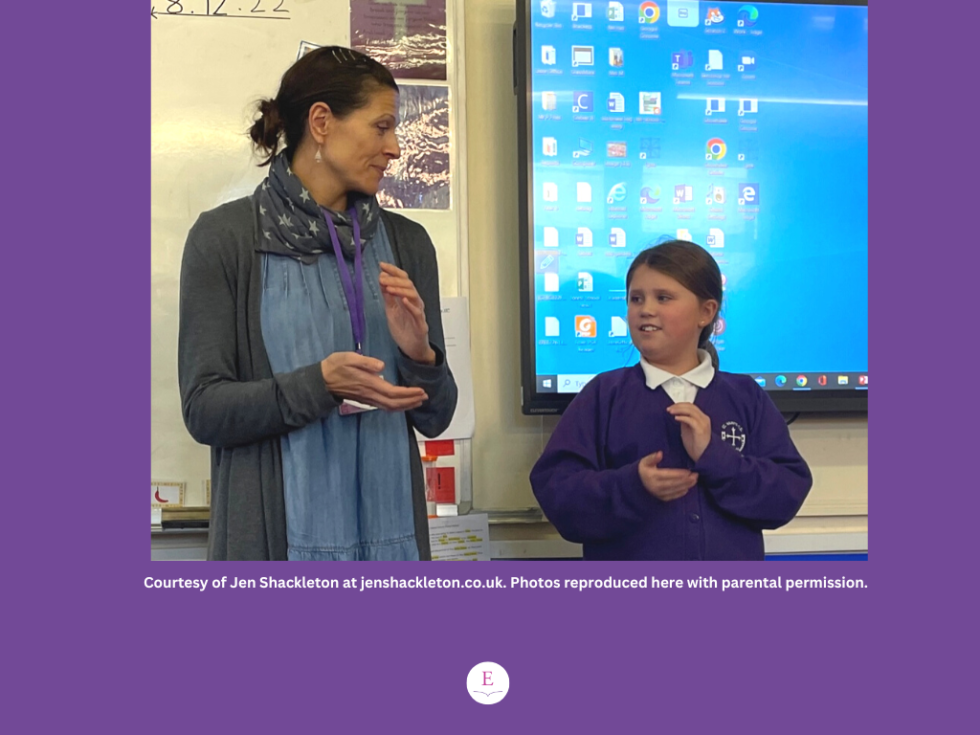
EFT in a Year 5 Classroom: Jen Shackleton’s Tapping in School Project
GUEST WRITER: Jen Shackleton talks about bringing EFT into a Year 5 classroom for student wellbeing in her school via her innovative 4-week Tapping in School Project. The Emotional Freedom Technique (EFT), also known as ‘tapping’, can be taught in school settings as a self-regulation skill. It’s so simple even primary school children can learn it to help themselves feel calmer and better when needed.
In this article Jen talks about:
- why she put together a 4-week Tapping in School program for a Year 5 class in her school
- the ‘how’ part of her Tapping in School initiative
- the benefits children got from Jen’s wellbeing intervention
Read on to learn more about the exciting results of her innovative student wellbeing initiative!
WHY I BROUGHT EFT INTO A YEAR 5 CLASSROOM

HOW I BROUGHT EFT INTO A YEAR 5 CLASSROOM
My acupressure pen was invaluable as demonstrating the location of acupressure points on willing volunteers brought everything to life and boosted their enthusiasm further. We were off to a good start!
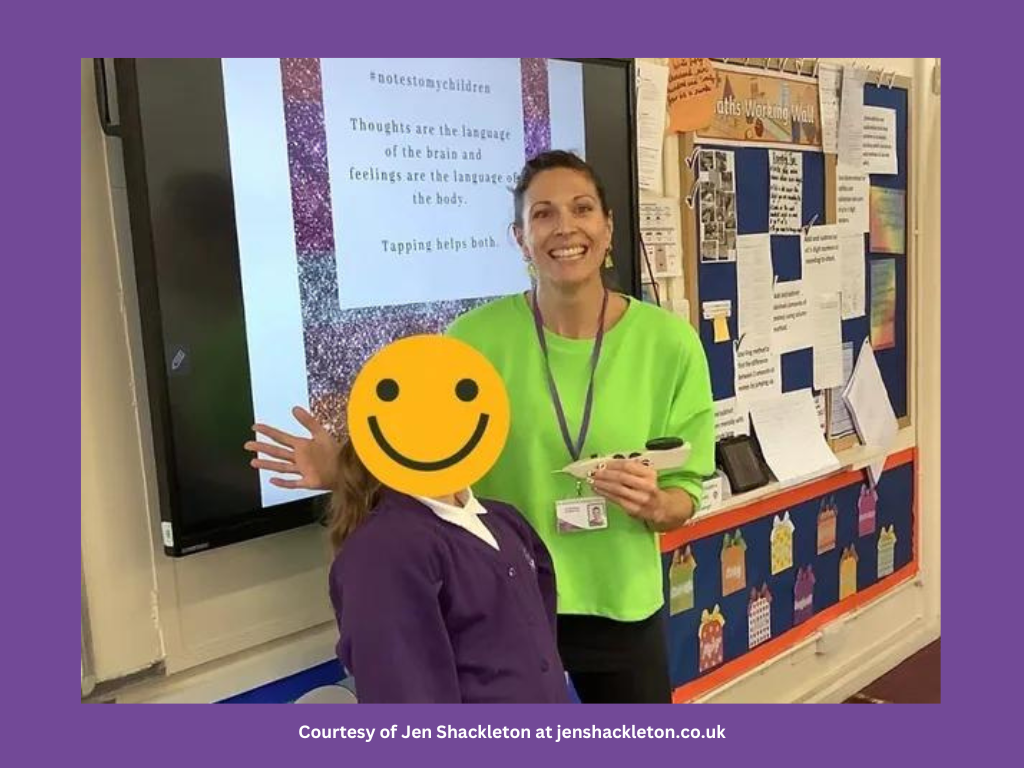
The plan was for the children to do some whole class tapping three times a day, for four weeks; first thing in the morning, straight after break and also after lunch. Each time, if they wanted to, they would write the date and how they felt in their tapping journal, note down the intensity out of 10 and then see how the number changed after a few minutes of tapping.
Within the first couple of days, the children had already taken ownership of it and were tapping silently or talking quietly to themselves without needing an adult to remind them. However, I quickly realised that it would be helpful to some if they had a person at the front to follow. So although I had recorded videos of myself for them to tap along to, I decided to train two children so they could stand at the front and lead the class. This was an invaluable learning point – next time, I will do this right from the start.
SOCIAL AND EMOTIONAL LEARNING OUTCOMES
Within the first few days, the children were already taking ownership of their tapping and being self-motivated to come in, focus on how they felt, scale the intensity out of ten, and then tap silently or talking quietly to themselves without needing an adult to remind them. One week in, the children were responding with positivity about tapping; one child said that her parents were stressed at home and so she had taught them how to tap and that it had calmed them down – something which took her parents by surprise! Two other children recounted to me that they’d recently taken part in a sports competition in a noisy and busy hall which had been quite stressful, so they had decided to tap and it had helped them to calm down in that moment.
Each week, I checked in with the class so they could share any stories with me, and I could answer any questions. At the end of the first week, one child shared with me that she always came into school feeling happy, so how could tapping help her as she wanted to stay happy? To answer her question, I led the whole class in a short tapping meditation to increase their happiness levels. It combined tapping with visualising things that made them happy, and encouraging them to build that feeling and to anchor it in so they could carry it with them for the rest of the day.
By week 4 the children had become so confident about tapping that they were doing it independently whenever they felt they’d like to. They found they were doing less whole class tapping as it was not longer needed as much to help themselves calm down.
STUDENT WELLBEING RESULTS: A SAMPLE OF WORK FROM CHILDREN'S TAPPING JOURNALS
At the start of this section, you saw the impact that just tapping on feeling sleepy had on a student’s energy levels and readiness to learn. Below you will find six more examples of the impact on student wellbeing as recorded by students in their Tapping Journals.
EXAMPLE 1: If you look at Example 1 (top left), you will notice one student chose to tap to help themself regulate their anger. Notice how the intensity of their anger from a 3/10 before tapping to a 1/10 on one day at 8.48am, feeling ‘snappy’ went from a 10/10 to a 6/10 after tapping at noon, and ‘angry’ went from a 7/10 to a 2/10 at 3.01pm.
EXAMPLE 2: Meanwhile in the second example (top right) you see how after this student tapped at 8.45am their happiness intensity went up from a 7/10 to a 9/10, and after tapping at noon it went up from a 9/10 to a 10/10. Then when something happened in the afternoon that brought up a tired and embarrassed feeling (10/10) at 3.09pm, the student tapped on it and those distressing feelings went down to a 2/10 before going home!
EXAMPLE 3: Another student (top left) noticed their happiness levels went up from a 6/10 to a 9/10 after tapping at 8.44am on a Monday, their sadness went down from an 8/10 to a 6/10 after tapping at noon, and their happiness went up from a 9/10 to a 10/10 before going home.
EXAMPLE 4: Yet another student (top right) tapped when they felt they needed it – the feeling that they were frustrated was a distressing 10/10 before tapping. After tapping, it dropped to a much more manageable 5/10.
EXAMPLE 5: In addition to the usual measurements, some students also added some words about the tapping process itself (top left). In this example, you see a student reflection on how “Tapping is: relaxing, calming, if your anxious it takes your worries away.” Meanwhile in the upper right hand corner they add “I love tapping it makes me feel really calm and relaxed inside.”
EXAMPLE 6: And last but not least, this student’s Tapping Journal entry is another reminder of how useful tapping in the classroom can be for learning and student wellbeing, from helping with boosting energy to learn when feeling sleepy (‘sleepy’ 6/10 dropped down to only 4/10 after tapping before the first lesson) and going from feeling good go great midday (‘great’ 6/10 to 9/10). It also helped self-regulate when feeling angry (7/10 down to a 1/10 before going home!)’
END OF 4 WEEK TAPPING IN SCHOOL PROJECT: STUDENT REFLECTIONS
- ‘I feel calm and more happy, more brave about things.’
- ‘I really liked tapping because it calms me down and helps me relax and feel less angry.’
- ‘I feel a bit better after every session.’
- ‘I love tapping because when I’m mad you help me to be happy and joyful.’
- ‘Tapping helps me when I’m stressed or worried and it calms me down because, say I’m 10 angry, then I tap, it goes down to 3 or 4!’
- ‘I feel less anxious.’
- ‘I love doing tapping because it is calming.’
- ‘I think that it does help me a lot and if I am angry it makes me calm. If I am not that happy, it makes me more happy!’
- ‘Calm and more happy.’
- ‘It helps me when I feel sad and worried because it calms me down and makes me not stressed anymore.’
- ‘Good and great because I have calmed down.’
- ‘I feel more happy after every session. I feel better than I did before.’
- ‘Just daily life feels a lot better after tapping for four weeks, which is quite good for me.’
- ‘I feel better now that we have done tapping. At football club, I did tapping and then we won!’
- ‘I feel good and relaxed.’
- ‘It helped me a lot but sometimes it didn’t.’
- ‘Good. I feel relaxed because tapping on the pressure points go all around my body.’
- ‘I feel very good after 4 weeks of tapping and now I do it a lot at football and other clubs, or at home!’
- ‘I feel more tired after a session of tapping.’
- ‘It didn’t affect me much.’
- ‘At first, I didn’t think it was working but eventually I really understood it was working. I enjoyed tapping.’
- ‘Tapping helps to clear my mind of bad thoughts.’
I can safely say I did more than just smile when I read their comments; aside from one or two children who are still to be convinced, the overwhelming majority had wonderful, positive things to say about how tapping makes them feel. I hope that they will continue to tap long after our project is a distant memory.
I wonder what Year 3 will make of it all next term..!
ABOUT THE AUTHOR

Jen Shackleton is an EFT and NLP Practitioner and an experienced teacher and school leader. She combines her role at St Mary’s with her private coaching and therapeutic business. You can learn more about her work by visiting her official website at: https://jenshackleton.co.uk
MORE ON INTRODUCING EFT IN PRIMARY SCHOOL
- “EFT Tapping in Primary School”, interview with Jen Shackleton
- “EFT Tapping with Year 1 Classes and Beyond”, interview with Tina Bajjada
- “EFT Tapping with Year 5 and 6 Classes”, interview with Dr. Margaret Lambert
- “Bringing EFT into Greek Primary Schools”, article by Marina Koutra
- “Learning and Wellbeing: Resolving Emotional Stressors in School”, article by Theresa Virgona and Jo Barker
- “Emotional Regulation Skills for Kids: Tapping in the Classroom for Ages 6-10”, interview with Sarah Gilbert


